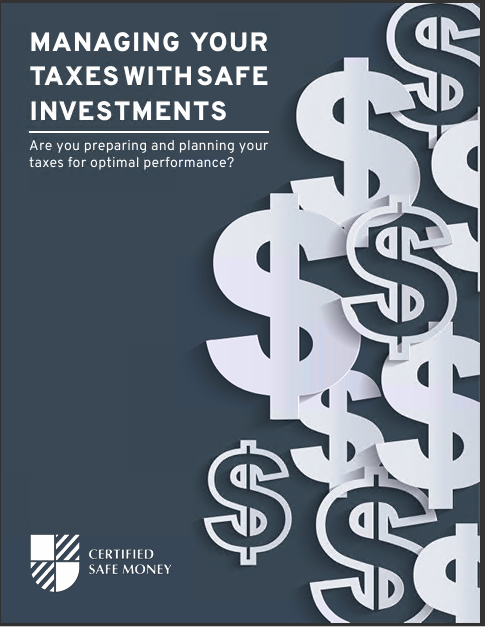Key Takeaways:
- Indexed Universal Life (IUL) Insurance combines life insurance with cash value growth linked to market indexes, offering flexible premiums and tax-deferred growth.
- While IUL Insurance provides potential for higher returns and protection against market downturns, it also comes with complexities and potential downsides, including fees and the need for ongoing management.
Signing Up for IUL Insurance: Key Features, Benefits, and Potential Downsides
When it comes to planning for the future, ensuring that you have a robust financial strategy in place is crucial. Indexed Universal Life (IUL) Insurance presents a compelling option by combining life insurance coverage with the potential for cash value growth linked to market indexes. This unique blend of features offers a flexible and potentially lucrative avenue for securing your financial future. However, as with any financial product, IUL Insurance comes with its own set of benefits and potential downsides. This article will provide an in-depth look at what IUL Insurance entails, its key features, benefits, and the potential pitfalls to consider before signing up.
Understanding IUL Insurance
Indexed Universal Life Insurance is a type of permanent life insurance that not only provides a death benefit but also includes a cash value component. This cash value can grow over time based on the performance of a selected market index, such as the S&P 500. Unlike other forms of life insurance, IUL policies offer flexibility in premium payments and death benefit amounts, making them adaptable to changing financial situations and goals.
Key Features of IUL Insurance
1. Market-Linked Cash Value Growth
The most distinguishing feature of IUL Insurance is its market-linked cash value growth. The cash value component of an IUL policy earns interest based on the performance of a specific market index. This means that during periods of market growth, the cash value can increase significantly. However, it’s important to note that the policy does not directly invest in the market; instead, it credits interest based on index performance.
2. Caps and Floors
IUL policies typically include caps and floors that define the range within which the interest credited to the cash value can fluctuate. The cap sets the maximum interest rate that can be credited during periods of strong market performance, ensuring that returns are limited to a certain percentage. The floor guarantees a minimum interest rate, protecting the cash value from negative returns even if the market performs poorly. This feature provides a safety net, ensuring that your savings are protected from market volatility.
3. Tax-Deferred Growth
One of the significant advantages of IUL Insurance is its tax-deferred growth. The cash value accumulates without being subject to annual taxes, allowing your savings to grow more efficiently over time. This tax-deferred status enhances the compounding effect, maximizing the growth potential of your savings and providing a substantial financial advantage during the accumulation phase.
4. Flexible Premium Payments
IUL Insurance offers flexible premium payments, allowing policyholders to adjust their premiums based on their financial situation and goals. You can choose to pay higher premiums to accelerate the cash value growth or lower premiums to maintain affordability. This flexibility makes IUL Insurance an adaptable tool in managing retirement savings and financial planning.
Benefits of IUL Insurance
1. Protection Against Market Downturns
One of the primary benefits of IUL Insurance is its ability to protect your investment from market downturns. Thanks to the floor feature, the cash value in an IUL policy is shielded from negative returns. This means that even if the market performs poorly, your savings will not decrease, providing a stable foundation for your financial future.
2. Potential for Higher Returns
The market-linked growth potential of IUL Insurance offers the possibility of higher returns compared to traditional fixed-rate insurance policies. During periods of strong market performance, the cash value can grow significantly, providing a robust avenue for building wealth over time. This potential for higher returns can be particularly attractive for those looking to enhance their retirement savings.
3. Tax-Free Loans and Withdrawals
The cash value accumulated in an IUL policy can be accessed through tax-free loans or withdrawals. These funds can be used for a variety of purposes, such as supplementing retirement income, covering unexpected expenses, or funding major life events. The ability to access these funds without incurring immediate tax liabilities provides a valuable financial resource during retirement.
4. Legacy Planning
IUL Insurance is an effective tool for legacy planning. The death benefit provided by the policy ensures that your beneficiaries receive a financial payout upon your passing. This feature not only offers peace of mind but also secures your family’s financial future. The death benefit can be used to cover various expenses, such as funeral costs, outstanding debts, or to provide an inheritance, ensuring that your loved ones are financially protected.
Potential Downsides of IUL Insurance
1. Complexity and Management Requirements
One of the potential downsides of IUL Insurance is its complexity. Understanding the intricacies of how the policy works, including the impact of caps, floors, and market-linked growth, can be challenging. Additionally, IUL policies require ongoing management to ensure they remain aligned with your financial goals. Regular reviews with a financial advisor are essential to monitor the policy’s performance and make necessary adjustments.
2. Fees and Charges
IUL policies often come with various fees and charges, including administrative fees, mortality and expense charges, and surrender charges. These costs can eat into the cash value growth and reduce the overall returns of the policy. It’s crucial to understand these fees upfront and factor them into your decision-making process to avoid any surprises down the road.
3. Interest Rate Caps
While the market-linked growth potential of IUL Insurance is a significant advantage, the interest rate caps can limit the returns during periods of strong market performance. This means that even if the market experiences substantial gains, the interest credited to your policy’s cash value will be capped at a certain percentage. This limitation can be a drawback for those looking to maximize their returns.
4. Policy Lapse Risk
If you do not manage the policy correctly, there is a risk of it lapsing. This can occur if the policy’s cash value is insufficient to cover the cost of insurance and other fees. A policy lapse can result in the loss of coverage and potential tax liabilities on any outstanding policy loans. Proper management and regular premium payments are essential to keep the policy in force.
Is IUL Insurance Right for You?
Whether or not IUL Insurance is the right choice for you depends on your individual financial goals, risk tolerance, and overall retirement strategy. Here are a few considerations to help you decide:
Consider Your Financial Goals
When considering IUL Insurance, it’s crucial to define your financial goals. Are you looking for a way to grow your savings with market-linked potential while still protecting against losses? Do you need flexible access to funds for retirement or other financial needs? Understanding your objectives will help determine if IUL Insurance aligns with your financial plan.
Assess Your Risk Tolerance
IUL Insurance offers protection against market downturns, but it also comes with caps that limit the growth potential during strong market performance. Assess your risk tolerance to determine if this balance of risk and reward is suitable for your investment strategy.
Understand the Costs
Be aware of the fees and charges associated with IUL Insurance. Understanding these costs upfront will help you make an informed decision and avoid any surprises down the road. Consider working with a financial advisor to evaluate the impact of these fees on your overall returns.
Regular Monitoring and Adjustments
IUL policies require ongoing monitoring and adjustments to remain aligned with your financial goals. Ensure that you are prepared to review your policy regularly and make necessary changes to maximize its benefits.
Evaluating the Pros and Cons of IUL Insurance
Indexed Universal Life Insurance offers a unique blend of life insurance protection and potential cash value growth tied to market indexes. Its flexibility, tax-deferred growth, and protection against market downturns make it an attractive option for many. However, the complexity, fees, and management requirements necessitate careful consideration. By understanding its features, benefits, and potential downsides, you can make an informed decision about whether IUL Insurance is the right fit for your financial strategy.













